Human, not machine: as workflow patterns shift, how do we balance productivity with well-being?
As a new generation enters the workplace desiring a more flexible workstyle, the world’s pandemic experience has broken down the barriers to change allowing organisations to re-think workflows and redefine productivity.
When attracting, securing, and evolving talent is the key to competitive advantage, providing the necessary means to balance productivity and well-being is business-critical, and therefore should become a simple ROI calculation.
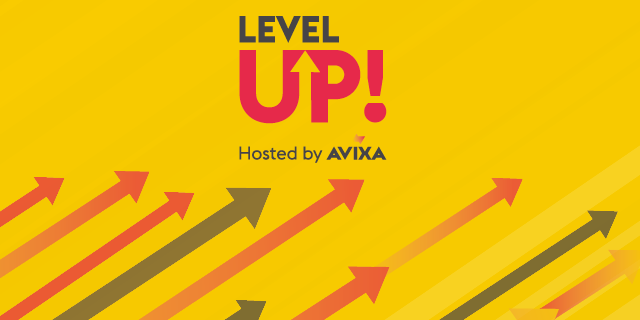
This topic was discussed during a webinar session hosted by AVIXA. An interactive session, there was much thoughtful comment from participants which has contributed to this blogpost.
The session was led by Simon Hayes and Gunnar Kyvik of Sharp/NEC with guest contributors from Fusion Spaces and Huddly.


When businesses were thrust into the unknown, the agile workflows of the future that we all talked about so longingly suddenly came into view. 10 years of transformation happened in a matter of months, yet despite the disruption, businesses found they continued to function.
Technology can take enormous credit in this success, enabling the workforce to operate remotely whilst IT/AV teams worked miracles managing the complex issues around security and infrastructure. Against the odds, it worked, and now for many, there is no going back, the world has changed.
Empowering employees requires a level of trust and empathy.
Whilst the 2020 work-from-home scenario was forced upon us, the post-covid re-emergence is offering exciting opportunities to reimagine the world of work. How companies will shape this new world remains to be seen and will hinge upon how their culture has, and will continue to, evolve.
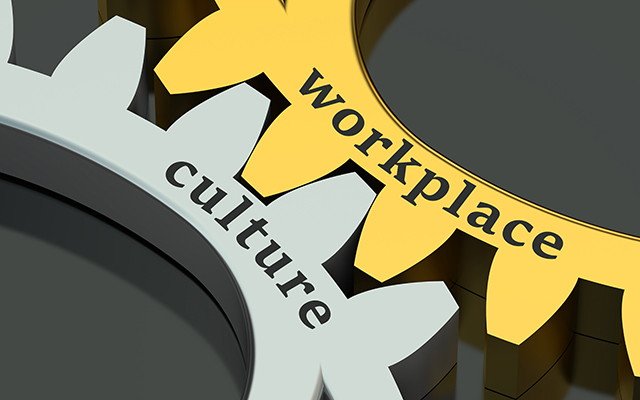
Allowing the workforce to work from home was for many companies an uncomfortable scenario - empowering employees requires a level of trust and empathy. Only by rethinking the meaning of productivity, and understanding that it is inextricably linked to well-being, can businesses truly evolve and embrace new opportunities for success.
Human, not machine: people need to feel well to work well, stress and anxiety will inevitably curb creativity and impact productivity. The triggers and manifestation of stress are manifold, variable in frequency and severity, and unique to each individual – too complex to delve into here. Yet by adopting more flexible workflows, accompanied by a more benevolent working culture, organisations are acknowledging basic human need, working in harmony for mutual gain.
Investing to provide the tools and means to support your human workforce becomes a simple ROI calculation - the compassionate employer will maximise his yield.
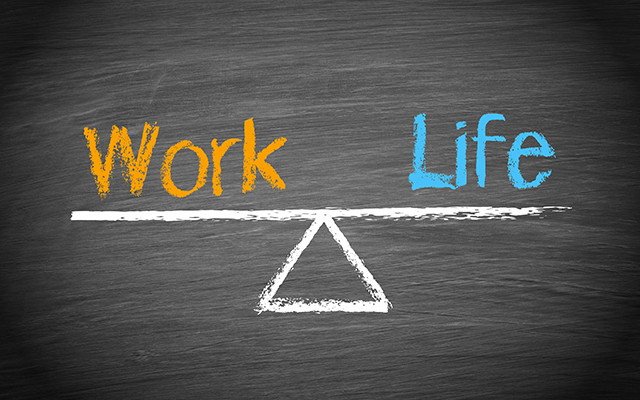
Discussion points during the AVIXA session:
A framework for expectation
Some young, dynamic companies may have already adopted a flexible work pattern, fully aware of what today’s new talent are seeking.
More established, traditional companies will find the transition more challenging, yet most are accepting of the inevitability.
There is no one size fits all, in working toward redefining their corporate culture, each organisation must set out their expectations within an entirely transparent framework enabling both employer and employee to fully understand their responsibilities and what they should expect from one another.

The measure of productivity
Employers attempting to measure productivity by the number of zoom calls undertaken, which is simply an extension of the nonsensical measure of hours spent in the office, are out of touch. Not all meetings are necessary or even productive.
Micro-managing employees and back-to-back video calls must be consigned to the past. A ‘meeting’ need not even take its traditional form; consider an outside collaboration space, conversation whilst walking, or at the gym, or in the café – wherever you feel most creative and therefore most productive.
To attract and retain the best it is necessary to show them trust and empathy, empowering them to best manage their own work patterns.
Showing trust is an excellent measure of a good manager, you employed someone because you believed in their capacity to fulfil the remit you defined, now you need to let them get on with the job.
As organisations redefine productivity to fit an evolving corporate culture, this must permeate the entire organisation from senior management to line mangers and beyond.
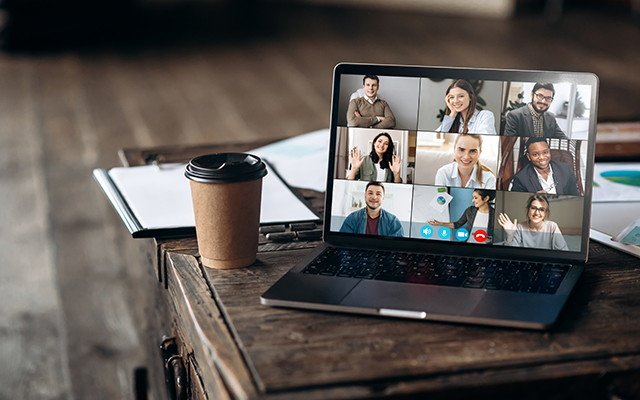
Raised expectations
The period of forced home working allowed more time to attend to focused tasks and respond quickly to emails, phone calls and video meeting invites – your clients and co-workers knew where you were. This has raised expectations to a level which is now unsustainable as people gain the freedom to travel and visit clients. It can take several days before workers can catch up with emails and those tasks that need focused time will have to wait.
Moving forward, managers and co-workers will need to readjust their expectations whilst the freedom to split the week between client visits and admin days at home is greatly valued. A 3:2 split is becoming a widely adopted arrangement, but by no means prescriptive. For many, pre-covid, there was some perception of enjoying a ‘long weekend’; as organisations re-adjust these outdated and tactless observations must be eradicated.
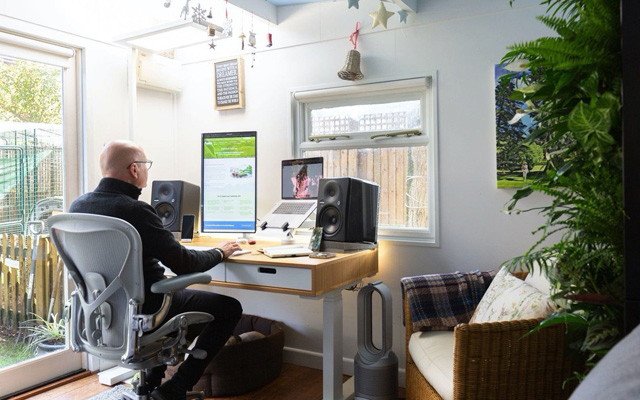
Credit: Cherry Beesley - Simply C Photography
Employers remain responsible for employee well-being
Empowering employees must not be interpreted as abandoning them; when working outside of the traditional office space, organisations remain responsible for the well-being of their workforce and should provide all the support and the tools they need to maintain a working style in rhythm with their personal circumstances.
Our well-being partner, Fusion Spaces, offer specialist wellbeing consultancy and solutions, supporting all aspects of hybrid working, from anywhere.
Intrusion on home life can cause friction and conflict.

Everyone has a different lockdown story. Everyone experienced it in different ways. Some report positively, some negatively. Universally however, the lack of boundaries between work-life and home-life causes friction.
As the lines between work-life and home-life blur, it is vital to put boundaries in place, and these must be respected by both the employee and the employer. By redefining productivity and supporting more flexible workflows, organisations can work to reduce the tension.
Discussion points during the AVIXA session:
Intrusion on family life
The freedom to spend more time with family is a blessing and the additional parental input will bring untold value to future generations of children. There is no doubt however that the lockdown period was a great cause of stress, especially for those who had to juggle work and home schooling or caring for very young children. Whilst home schooling will, hopefully, be consigned to the past, home working will continue to intrude on family life, potentially taking up some of the family space.

The extended period of home schooling pushed many education providers to embrace new cloud platforms such as MS Teams and Zoom, in much the same way as businesses have.
With both students and teachers now proficient in this communication method it remains an excellent channel to supplement in-school learning moving forward, allowing 24/7 access to teaching material.
Home office equipment therefore could have extended, multifunctional use for the whole family, helping to harmoniously blend home and work lifestyles.
Everyone’s situation is different, some may be able to dedicate a spare room or have potential for a garden office; but organisations need to be aware that junior workers are unlikely to have this luxury.
A small studio flat is not conducive, especially when shared with a similarly home-working partner.
Flexible workflows will enable workers to coordinate their home-based work time around other family members, making use of local serviced office space or community work hubs as needed, or travelling to client premises or the office as and when it suits.

Isolation
For those without family, home working can be very isolating. Workers could potentially go all day without interacting with anyone.
There could be a temptation to spend longer ‘at work’, to the detriment of their physical and mental well-being.
The social element provided by a f2f environment is vital, yet it need not be at the office. A half day working in the local coffee shop or a community work hub will provide a refreshing change of scene and essential human interaction.

Travel time
For many, travel time between the office and home is a time for mindful reflection, or me-time; an opportunity to transition between work-mode and home-mode.
Without this defining boundary, it becomes hard to switch off from work, or give enough of yourself to your family, or make time for relaxation.
Many workers wish to return to the office to reinstate this boundary which is important for a harmonious work/life balance.
How to gain harmonious cooperation by optimising space and technology to support holistic productivity and happy people.
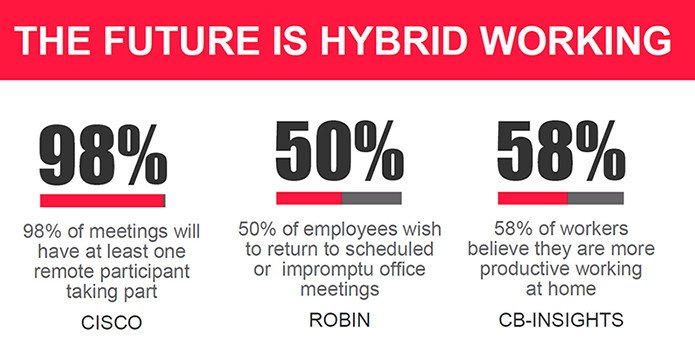
There is no one size fits all. As we have identified above, every organisation is different, every employee is different, every scenario is different.
Knowing what each scenario requires, and what tools are needed, demands a bespoke approach, one which involves all parties. Working to identify the perfect-fit solution is a journey and it is vital that the user is closely involved.
Learning outcomes:
- By embracing new freedoms, and acknowledging the challenges of home-based working, there are exciting opportunities to foster innovative lifestyle-friendly technology, blending usage across the business and the home.
- By recognising the human-factor, elements as simple as appropriate lighting, acoustics, furnishings and biophilia provide possibilities to harmonise space and technology, creating a more conducive environment. Creating inviting workspaces, places where people want to be to socialise, to network, and be proud to meet clients is key.
- Every meeting is likely to include remote participants requiring high quality AV technology to ensure the best possible experience for all. Multifunctional workspaces must be optimised for collaboration supporting frictionless Bring Your Own Meeting scenarios using any platform.
- Analytics provides intelligent data to help organisations right-size investments, fine-tune efficiencies and help maintain covid-safety measures.

Using already familiar tools and connecting teams via a single USB-C cable, the new WD551 Windows Collaboration Display blends seamlessly into any environment.
Find out more, go to wd551.com
Along with our partners, Sharp/NEC can offer expert consultancy to guide organisations toward achieving their goals, and those of their much-valued workforce. Contact us to begin your journey, we are your long-time technology partner.
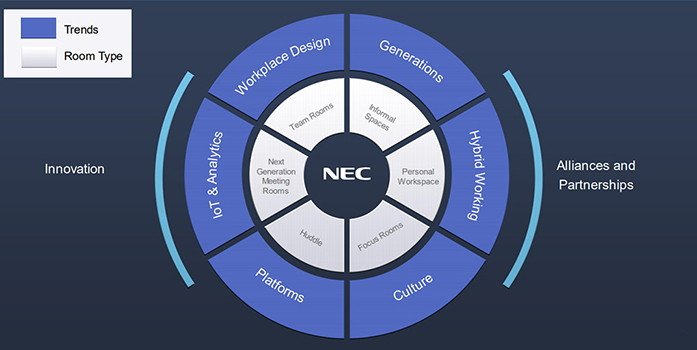
Simon Hayes
Meeting Space and Collaboration Specialist
Sharp NEC Display Solutions
Gunnar Kyvik
Business Segment Lead – Meeting & Conferencing, EMEA
Sharp NEC Display Solutions Europe GmbH
Jayne Cox
Director of human wellbeing and free-range consultancy
Fusion Spaces
Michael Cox
Director of technical innovation for wellbeing
Fusion Spaces

Fraser Park
VP Strategic Alliances
Huddly

